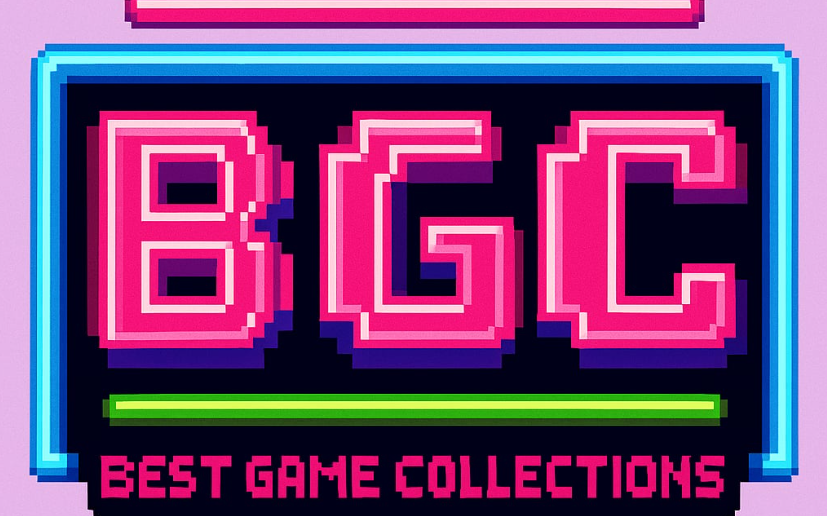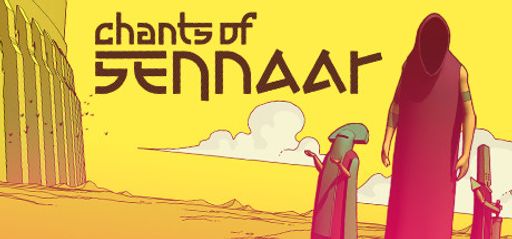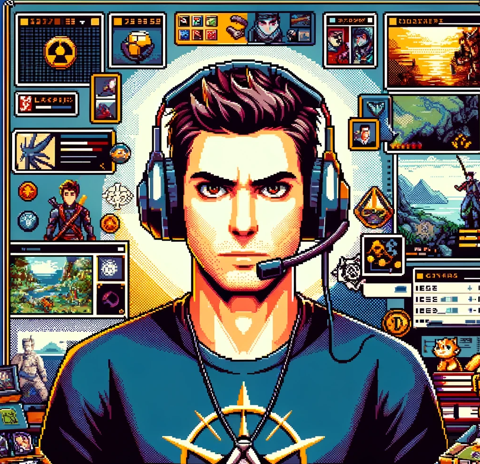 Let’s start with Chants of Sennaar, developed by Rundisc and published by Focus Entertainment. This game offers remarkable depth, packed with intricate details to explore and decode—making it perfect for my completionist tendencies. Looking at user reviews on Steam, many players praised its innovative language-based puzzles and enchanting setting. At the same time, some found the final language-solving stage slightly underwhelming. What’s your take?
Let’s start with Chants of Sennaar, developed by Rundisc and published by Focus Entertainment. This game offers remarkable depth, packed with intricate details to explore and decode—making it perfect for my completionist tendencies. Looking at user reviews on Steam, many players praised its innovative language-based puzzles and enchanting setting. At the same time, some found the final language-solving stage slightly underwhelming. What’s your take?
 I understand those critiques. Still, as someone who thrives on exploration and discovery, I found the language puzzle mechanics captivating. They truly enhanced the sense of adventure, offering a fresh spin on puzzles reminiscent of the glyph system in Heaven’s Vault. Since originality plays a huge role in game design, Rundisc deserves credit for delivering something so unique.
I understand those critiques. Still, as someone who thrives on exploration and discovery, I found the language puzzle mechanics captivating. They truly enhanced the sense of adventure, offering a fresh spin on puzzles reminiscent of the glyph system in Heaven’s Vault. Since originality plays a huge role in game design, Rundisc deserves credit for delivering something so unique.
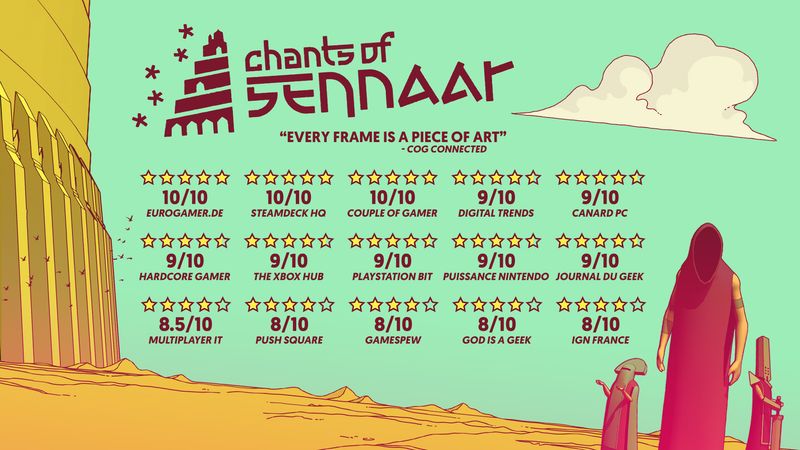
 Moving on to mechanics, the linguistic puzzle system adds impressive strategic depth. It challenges players much like a competitive game—but in a mental rather than reflex-based way. While many titles treat puzzles as secondary, Chants of Sennaar builds its entire experience around them. The Traveler’s journey to unite the Peoples relies heavily on these mechanics, making every interaction feel purposeful.
Moving on to mechanics, the linguistic puzzle system adds impressive strategic depth. It challenges players much like a competitive game—but in a mental rather than reflex-based way. While many titles treat puzzles as secondary, Chants of Sennaar builds its entire experience around them. The Traveler’s journey to unite the Peoples relies heavily on these mechanics, making every interaction feel purposeful.
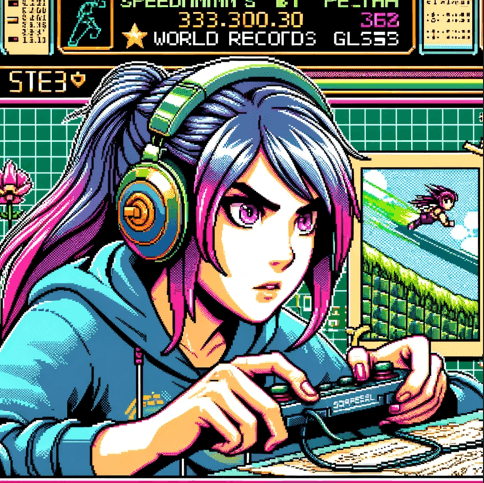 On the narrative side, the pacing kept me engaged from start to finish. Many games struggle with sluggish or uneven story progression. However, Chants of Sennaar maintains a steady flow, ensuring that even the most challenging language puzzles never feel frustrating. This balance is ideal for players like me, who enjoy speedrunning while still appreciating an engaging story.
On the narrative side, the pacing kept me engaged from start to finish. Many games struggle with sluggish or uneven story progression. However, Chants of Sennaar maintains a steady flow, ensuring that even the most challenging language puzzles never feel frustrating. This balance is ideal for players like me, who enjoy speedrunning while still appreciating an engaging story.
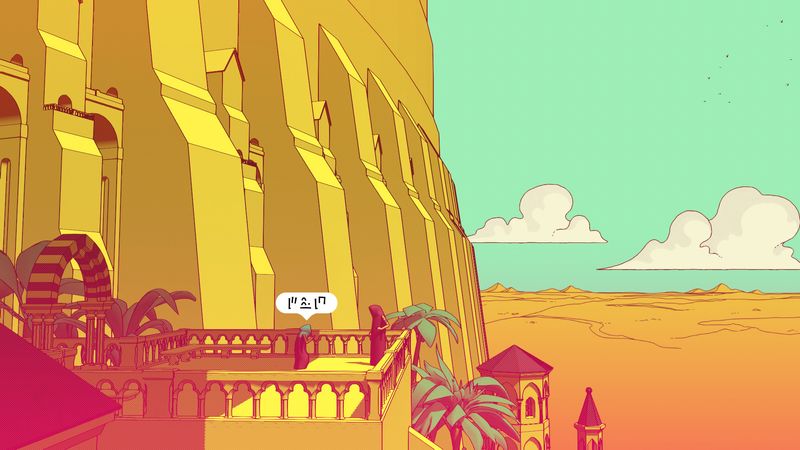
 Now, let’s talk about the visual style. Inspired by European comics, the game’s art direction makes every scene feel like stepping into a stunning graphic novel. As I descended into the Tower, I couldn’t help but admire how the developers pushed the Unity engine to its full potential, bringing this world to life.
Now, let’s talk about the visual style. Inspired by European comics, the game’s art direction makes every scene feel like stepping into a stunning graphic novel. As I descended into the Tower, I couldn’t help but admire how the developers pushed the Unity engine to its full potential, bringing this world to life.
 Absolutely! Of course, the audio design deserves just as much praise. Thomas Brunet’s soundtrack elevates the game’s atmosphere, shifting seamlessly with the mood, tension, and emotion of each moment. Instead of being just background music, the score actively enhances the storytelling, pulling players deeper into the experience.
Absolutely! Of course, the audio design deserves just as much praise. Thomas Brunet’s soundtrack elevates the game’s atmosphere, shifting seamlessly with the mood, tension, and emotion of each moment. Instead of being just background music, the score actively enhances the storytelling, pulling players deeper into the experience.
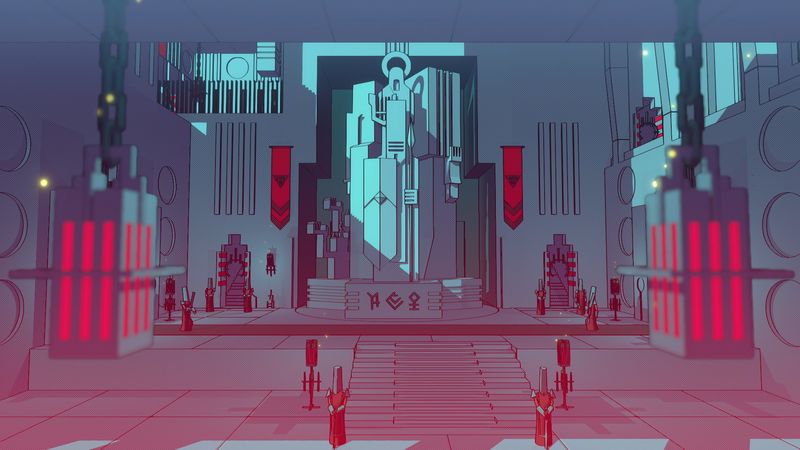
 Beyond that, character dynamics stand out as well. Each of the Peoples expresses their worldview through language, making interactions feel natural and organic. Rather than relying on traditional cutscenes, Rundisc cleverly uses this feature to develop characters in a way that feels immersive and engaging.
Beyond that, character dynamics stand out as well. Each of the Peoples expresses their worldview through language, making interactions feel natural and organic. Rather than relying on traditional cutscenes, Rundisc cleverly uses this feature to develop characters in a way that feels immersive and engaging.
 When it comes to difficulty, the game strikes a solid balance. The puzzles challenge players, yet patience, observation, and deduction matter more than fast reflexes or raw gaming skills. Because of this thoughtful design, Chants of Sennaar remains accessible to a broad audience, welcoming both casual players and puzzle enthusiasts alike.
When it comes to difficulty, the game strikes a solid balance. The puzzles challenge players, yet patience, observation, and deduction matter more than fast reflexes or raw gaming skills. Because of this thoughtful design, Chants of Sennaar remains accessible to a broad audience, welcoming both casual players and puzzle enthusiasts alike.
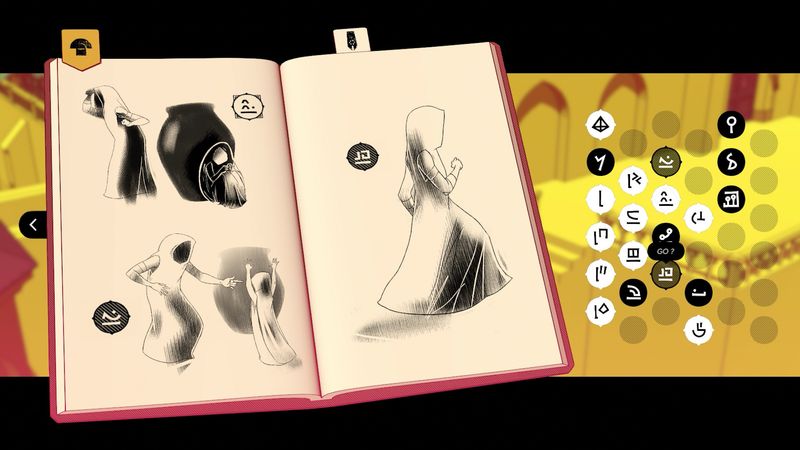
 Speaking of replay value, I keep uncovering side puzzles and hidden secrets beyond the main path. This game actively encourages multiple playthroughs, ensuring that each session brings new discoveries and a deeper appreciation for its intricacies.
Speaking of replay value, I keep uncovering side puzzles and hidden secrets beyond the main path. This game actively encourages multiple playthroughs, ensuring that each session brings new discoveries and a deeper appreciation for its intricacies.
 I couldn’t agree more! As we wrap up, it’s clear that Chants of Sennaar excels in in-depth puzzles, vast exploration, and a mesmerizing setting. It’s an excellent fit for explorers, strategists, completionists, and even speedrunners who love testing their efficiency.
I couldn’t agree more! As we wrap up, it’s clear that Chants of Sennaar excels in in-depth puzzles, vast exploration, and a mesmerizing setting. It’s an excellent fit for explorers, strategists, completionists, and even speedrunners who love testing their efficiency.
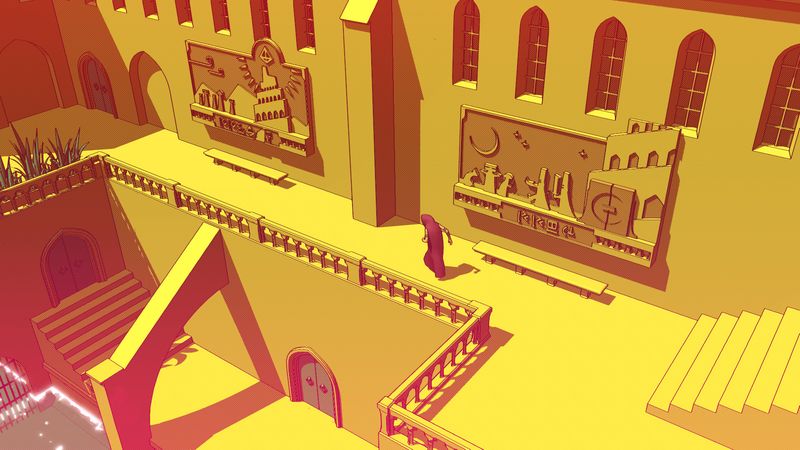
 If you enjoyed its puzzle-driven gameplay, consider checking out adventure games like The Witness or Fez. Both offer innovative puzzles, breathtaking environments, and rich mysteries waiting to be unraveled.
If you enjoyed its puzzle-driven gameplay, consider checking out adventure games like The Witness or Fez. Both offer innovative puzzles, breathtaking environments, and rich mysteries waiting to be unraveled.
 For those intrigued by Chants of Sennaar’s language-deciphering mechanics, Heaven’s Vault and Sethian provide similar linguistic challenges, letting you unlock the secrets of ancient civilizations.
For those intrigued by Chants of Sennaar’s language-deciphering mechanics, Heaven’s Vault and Sethian provide similar linguistic challenges, letting you unlock the secrets of ancient civilizations.
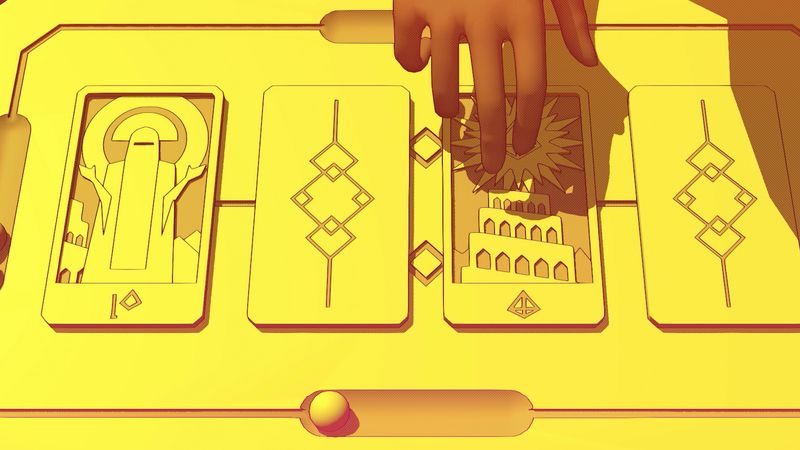
 This has been a fantastic discussion! Games like Chants of Sennaar push boundaries, appealing to different playstyles and proving how diverse and engaging video games can be. Let’s keep exploring these hidden gems together.
This has been a fantastic discussion! Games like Chants of Sennaar push boundaries, appealing to different playstyles and proving how diverse and engaging video games can be. Let’s keep exploring these hidden gems together.
